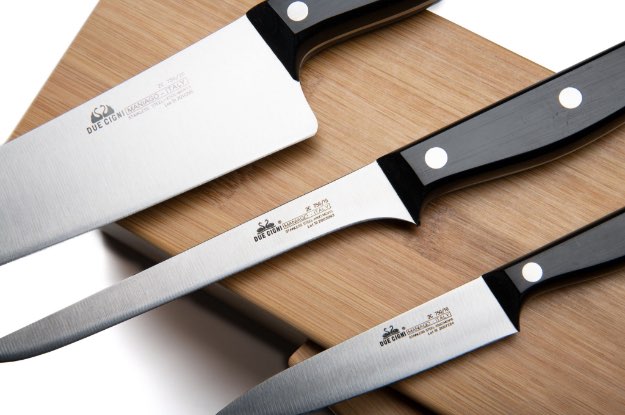Categories
Recent Articles
-
6 Steps to Sterilizing Pruning Shears March 08, 2024
-
How To Cut a Bell Pepper February 26, 2024
-
How To Cut Brisket February 26, 2024
Featured Products
How To Cut With a Knife
Knife Skills 101: A Comprehensive Guide on How to Cut with a Knife
Mastering the art of cutting with a knife is a fundamental skill for anyone who loves to cook. Whether you're a professional chef or a home cook, understanding different cutting techniques is essential for creating delicious meals. In this comprehensive guide, we will walk you through the basics of knife handling and various cutting techniques that will elevate your culinary skills. From chopping to dicing and slicing, you'll learn the tips and tricks that will make you a pro in the kitchen.
Choosing the Right Knife
Before you start cutting, it's crucial to have the right knife for the task at hand. Different knives are designed for specific purposes. Here are some essential knives and their uses:
- Chef's Knife: A versatile, all-purpose knife for chopping, slicing, and dicing.
- Paring Knife: Ideal for precision tasks like peeling and trimming.
- Bread Knife: Serrated edge for cutting through bread without crushing it.
- Santoku Knife: A Japanese knife for slicing, dicing, and mincing.
Knife Handling Basics
Proper knife handling is the foundation of safe and efficient cutting. Follow these guidelines to ensure you handle your knife correctly:
- Grip: Hold the knife handle firmly with your dominant hand, while your non-dominant hand provides stability by holding the food.
- Finger Placement: Curl your fingers inwards and rest them on the side of the blade, away from the edge. The thumb should be behind the blade, guiding your movements.
- Cutting Motion: Use a rocking or slicing motion with the knife to cut through the food smoothly.
Knife Maintenance
A well-maintained knife is essential for precise cutting. Regularly sharpening and caring for your knives will extend their lifespan. Here's how to maintain your knives:
- Sharpening: Invest in a good quality knife sharpener or use a sharpening stone to keep the blade sharp.
- Cleaning: Hand wash your knives with mild soap and warm water, avoiding the dishwasher, which can damage the blade.
- Storage: Store your knives in a knife block, magnetic strip, or blade guards to prevent dulling and accidents.
Basic Cutting Techniques
Now, let's explore some fundamental cutting techniques that every cook should master:
Chopping:
- Used for larger pieces, such as chopping onions or bell peppers.
- Start by making even slices, then stack them and make crosswise cuts.
Dicing:
- Creates uniform, small cubes and is perfect for ingredients like carrots or potatoes.
- Begin with slices, then stack and make lengthwise and crosswise cuts.
Slicing:
- Used for creating thin, even slices of items like tomatoes or cucumbers.
- Maintain a consistent thickness by controlling the angle and pressure.
Julienne:
- Produces thin matchstick-sized strips.
- Start with slicing, then stack and make lengthwise cuts.
Mincing:
- Creates very fine pieces, ideal for garlic or herbs.
- Use a rocking motion with the tip of the knife.
Advanced Cutting Techniques
Once you've mastered the basics, you can move on to more advanced cutting techniques that add finesse to your dishes:
Bias Cut:
- Used for cutting items like carrots or zucchinis at an angle for an elegant presentation.
Chiffonade:
- Perfect for leafy greens and herbs.
- Stack leaves, roll them tightly, and make thin crosswise cuts.
Butterflying:
- Used for meat or poultry to create a thinner, evenly cooked piece.
- Cut the item horizontally without completely separating the halves.
Tourne Cut:
- A decorative cut for vegetables like potatoes, giving them an oblong shape.
Conclusion
Learning how to cut with a knife is a fundamental culinary skill that can significantly enhance your cooking experience. With the right knife, proper handling techniques, and a solid understanding of various cutting methods, you'll be well on your way to creating restaurant-quality dishes in your own kitchen. Remember that practice makes perfect, so don't be discouraged if it takes time to master these techniques. Keep honing your skills, and soon you'll be impressing your family and friends with your culinary expertise. Happy cooking!














